|

Director Ms Misako Ito
|
|
Message From Director Of JCC
Congratulations to Singapore for her first UNESCO World Heritage inscription on the Singapore Botanical Gardens! As I travel often, the first place I would think of visiting would be the gardens of that particular country. The way I see it, gardens have infinite space, which gives me room to appreciate nature in her glory. Click to Read More |
|
|
| |
|
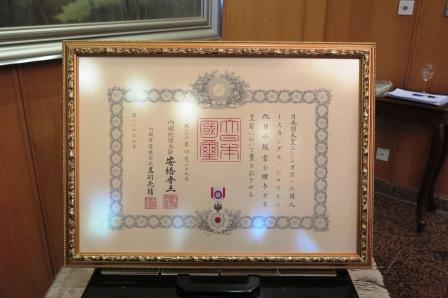
Commendation Award
|
|
Conferment of the Order of the Rising Sun Gold Rays with Rosette on Master Potter Mr Iskandar Jalil
Mr Iskandar Jalil, a renowned Singaporean potter, was conferred with the Order of the Rising Sun, Gold Rays with Rosette by His Excellency Ambassador Haruhisa Takeuchi on 9 June 2015. It is to recognise his contributions in building cultural exchange and mutual understanding through pottery between Japan and Singapore for more than 40 years. Click to Read More
|
| |
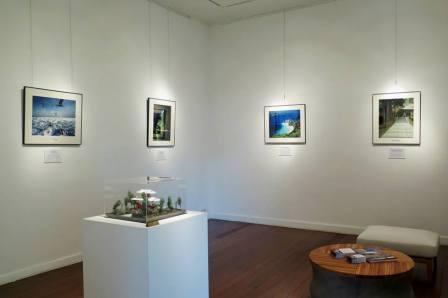
Portaits of World Heritage Sites in Japan
|
|
UNESCO World Heritage Sites in Japan
- A Photography Exhibition
A World Heritage Site is a place that is listed by the United Nations Educational, Scientific and Cultural Organization (UNESCO) as being of special cultural or physical significance. This list is maintained by the International World Heritage Programme administered by the UNESCO World Heritage Committee, which comprises of 21 UNESCO member states elected by the General Assembly. JCC is holding a photography exhibitiion of the UNESCO World Heritage Sites in Japan. Click to Read More
|
| |

Scene from Nonchan Noriben
|
|
JCC Cinema: Nonchan Noriben
JCC Cinema 33: Noriben – The Recipe of Fortune was held at Japan Creative Centre on 27 June 2015 with resounding success. His Excellency Ambassador Haruhisa Takeuchi and Mrs Takeuchi, as well as His Excellency Deputy Chief of Mission Minister Naohiro Tsutsumi attended the screening as well. The audiences also learnt about noriben and how to make one. Click to Read More
|
| |
| |
|
|
| |
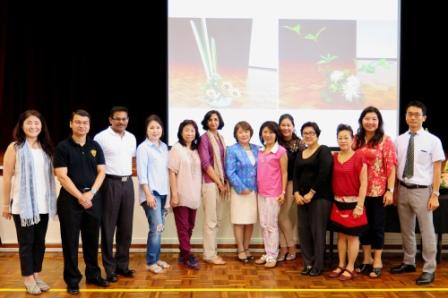
JCC Staff Group shot at the Serangoon JC
|
|
Reachout Programme: Spiritual Culture & Demonstration of Ikebana @ Serangoon Junior College
JCC had the pleasure of collaborating with Singapore’s own Ikebana community, the Ikebana International Singapore Chapter 135 (IISC 135) on Thursday 25th June. Japanese floral arrangement or Ikebana is a tradition passed down by generations and now, practiced all over the world. Click to Read More |
| |
|
|
|
|
| |
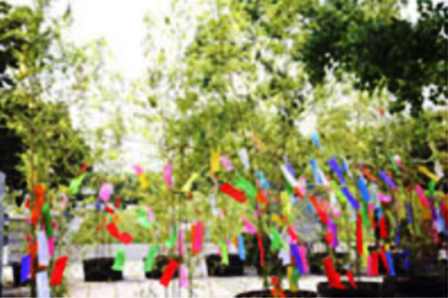
Credits:
Kids Web Japan
|
|
Tanabata
Tanabata, or the Star Festival, is held on the evening of July 7. The festival traces its origins to a legend that the Cowherd Star (Altair) and Weaver Star (Vega), lovers separated by the Milky Way, are allowed to meet just once a year - on the seventh day of the seventh month.
Click to Read More
|
|
|
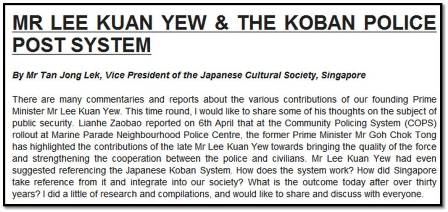
|
Mr Lee Kuan Yew & the Koban Police Post System
By Mr Tan Jong Lek, Vice President of the Japanese Cultural Society, Singapore
There are many commentaries and reports about the various contributions of our founding Prime Minister Mr Lee Kuan Yew. This time round, I would like to share some of his thoughts on the subject of public security. Lianhe Zaobao reported on 6th April that at the Community Policing System (COPS) rollout at Marine Parade Neighbourhood Police Centre, the former Prime Minister
Mr Goh Chok Tong has highlighted the contributions of the late Mr Lee Kuan Yew towards bringing the quality of the force and strengthening the cooperation between the police and civilians. Click to Read More
|
| |
|
| |
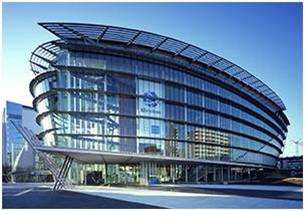
Credits: Miraikan
|
|
Miraikan
The National Museum of Emerging Science and Innovation (Miraikan) is a place where we can understand the things happening in our world today from a scientific point of view, and have discussions while considering the future that awaits us. In addition to permanent displays and exhibitions that provide people with a chance to enjoy hands-on contact with science and technology, Miraikan's colorful line-up of offerings includes experienced based classes and talks. While exchanging opinions and ideas with Science Communicators, visitors can experience the technological progress of today, from simple day-to-day questions to the latest technologies the global environment and space exploration. Click to Read More
Concerning the exhibition of Miraikan:Click to View Video
And for more Information: Click this Link
Special Exhibition"Pokémon Lab: You do it! You discover!"
This special exhibition presents entertaining experiences to learn about scientific methods and processes such as observation and classification, with Pokémon as the subjects.
Exhibition Period: July 8 (Wed) - October 12 (Mon) , 2015
Closed: Tuesday (open on Tuesdays from July 21 to August 25, 2015).
|
| |
|
|
|
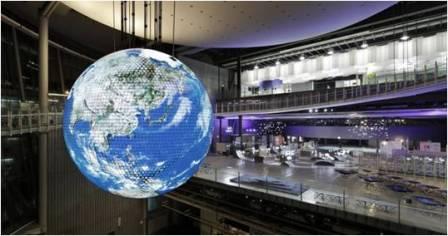
1) 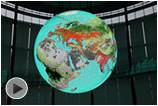
2) 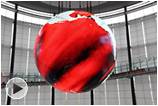
3) 
Credits:Miraikan
|
|
Geo-Cosmos
The Geo-Cosmos, the symbol exhibit of Miraikan, produces a rendition of our Earth shining brightly in space with a super high precision exceeding 10 million pixels. It is the world’s first "Globe-like display" using organic LED panels and was created from Miraikan's Chief Executive Director Mamoru Mohri's desire of "wanting to share with people the sight of our beautiful Earth as seen from space." The images of clouds floating across the display are created from images shot by a weather satellite each day. It allows you to see realistic image of how the earth looks like. Click to Read More.
Visualization of Scientific Information of Geo-Cosmos
1) Land Cover: Data: Global Mapping Project (International Steering Committee for Global Mapping, Geospatial Information Authority of Japan, Chiba University). Click to View Video.
2) Future Projection & Air Temperature: Data: JAMSTEC, AORI, NIES, MEXT.Click to View Video.
3) The Seasons on Earth: Data: NASA Earth Observations.
Click to View Video.
|
| |
|
|
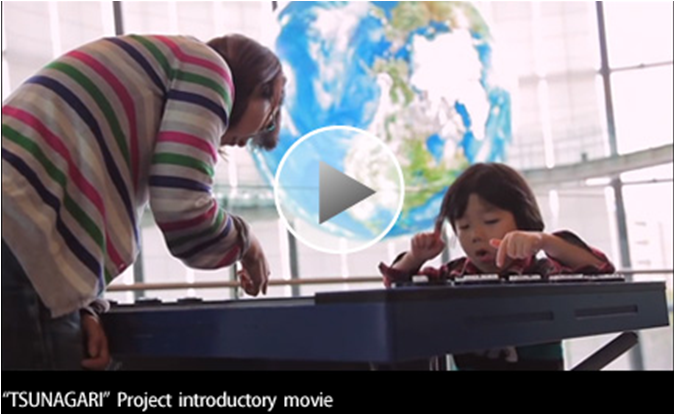
Credits:Miraikan
|
|
"Tsunagari" Project of Geo-Cosmos
This project involves visualizing scientific information and sharing it in a way that appeals to the senses, in order to deepen our knowledge about Earth and ourselves, and to create a vision for the future. By looking at the connections between ourselves and other lives within Earth’s ecosystem, we think about what should be done to preserve the vibrant Earth of today for the future.
The Geo-Cosmos is the key tool of the ”TSUNAGARI” Project, incorporating research data about the Earth, artistic expressions, and the ideas of people from around the world, in order to present a new image of Earth based on connections.
Click Here to Read More.
The following content is currently being displayed as a visualization of scientific information.
The Movements:Click Here to Read More.
Using a variety of data related to movement, this screening traces the path humanity has taken through history.
Visualization of Scientific Infomation:Click Here to Read More.
|
| |
|
|
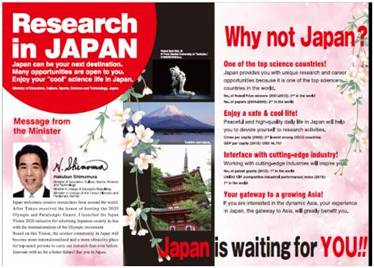
Credits: MEXT
|
|
Research in JAPAN Campaign
"Research in Japan“ campaign was launched to introduce the attractiveness of science life in Japan in 2014. Ministry of Education, Culture, Sports, Science and Technology (MEXT) strongly hope that more and more researchers could know research environment in Japan and do research in Japan. Click to Read More
|
| |
|
|
|

Credits: JSPS

Credits: JSPS

Credits: JSPS

Credits: JSPS
|
|
Fellowship programs
by Japan Society for the Promotion of Science (JSPS)
JSPS is a funding agency supporting scientific advancement. JSPS administers the Grants in Aid for Scientific Research and other Funding programs to underwrite Scientific research initiatives.JSPS has many programs about Inviting Researchers from Other Countries to Japan. Please see the following programs. (1-4)
1) Postdoctoral Fellowships for Foreign Researchers
Click this Link.
1) Long-term:
Outstanding young researchers are invited to Japan for 1-2 years to conduct join research under the guidance of their Japanese host researchers.
2) Short-term:
Young pre- and postdoctoral researchers are invited to Japan from Europe and North America to conduct joint research under the guidance of their Japanese host researchers for the relatively short period of 1-12 months.
3) Pathway to University Positions in Japan:
Outstanding young researchers are invited to Japan for 1-2 years to do pre-employment research in Japanese institutions.
4) Strategic program:
Excellent young researchers with high future potential from selected countries, starting with the major advanced nations, are invited to Japan for the purpose of building collaborative research relationships with Japanese colleagues .
2) Invitation Fellowship Programs for Research in Japan
(Long-term and Short-term) Click this Link.
Mid-career and professor level researchers from other countries are invited for long-term (2-10 months) and short-term (14-60 days) to collaborate with researchers in Japan. Nobel Prize level researchers from other countries are invited for short-term S (7-30 days) to guide research and inspire young people in Japan.
3) BRIDGE Fellowship Program Click this Link
Support is given to former fellows under the Postdoctral Fellowships for Foreign Researchers and other JSPS programs who are now members of JSPS alumni associations, providing them an opportunity to revisit Japan and create, maintain or strengthen their collaborative ties with Japanese colleagues and research institutions. (Visits are from 14 to 45 days.) .
4) RONPAKU (Dissertation PhD)Program
Click this Link.
This program provides tutorial and financial support to promising Asian and African researchers who wish to obtain a PhD degree from a Japanese university through the submission of a dissertation without going through a doctoral course.
|
| |
|
|
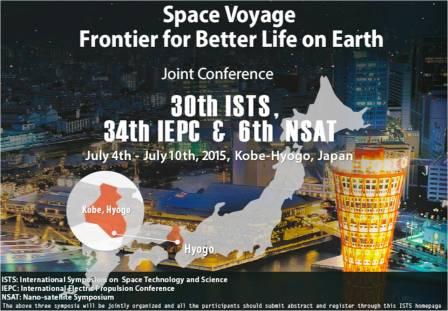
Credits: JAXA
|
|
The 30th ISTS to be held in Kobe
The 30th International Symposium on Space Technology and Science (ISTS) will be held at Kobe Convention Center from July 4 (Sat) to 10 (Fri), 2015. The ISTS is the leading space conference in Japan that attracts over 1,000 international participants, hosted in various cities in Japan.
The theme of the 30th ISTS is “Space Voyage - Frontier for Better Life on Earth.” Please join us and have stimulating discussions about space technology and science for our better life in the future.
Click to Read More
|
| |
|
|
|
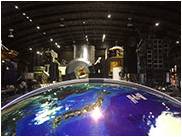
Credits: JAXA
|
|
Tsukuba (TKSC) "Space Dome" opens again after renewal!
The "Space Dome", an exhibition hall at the Tsukuba Space Center (TKSC) has been renovated and was reopened on Jun. 23 2015. We newly exhibit a real-size mock "Kibo", the Japanese Experiment Module of the International Space Station, and have a large screen on the floor called the "Orbital vision ? to decipher current and future space utilization through orbits", as well as renewed the satellite exhibition area. Please come and visit the newly born "Space Dome". Click to Read More |
|
|
|



